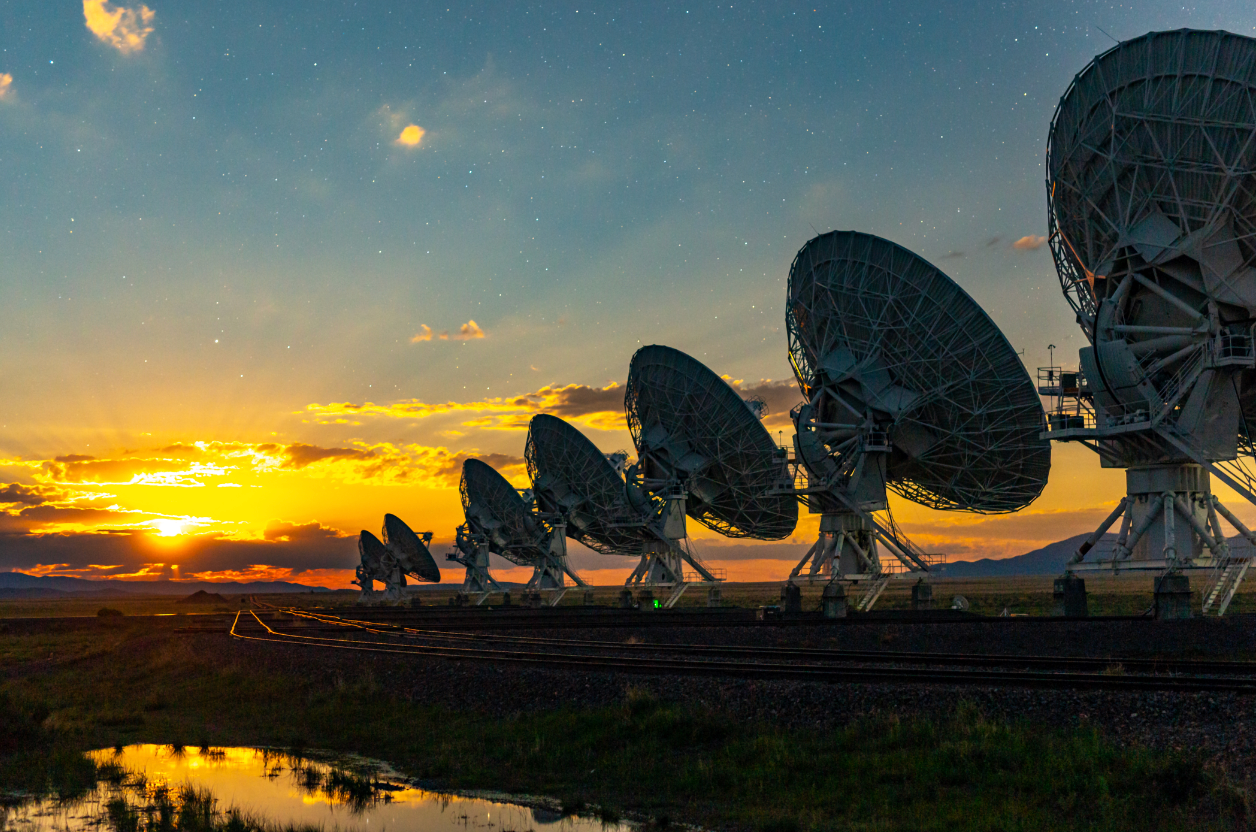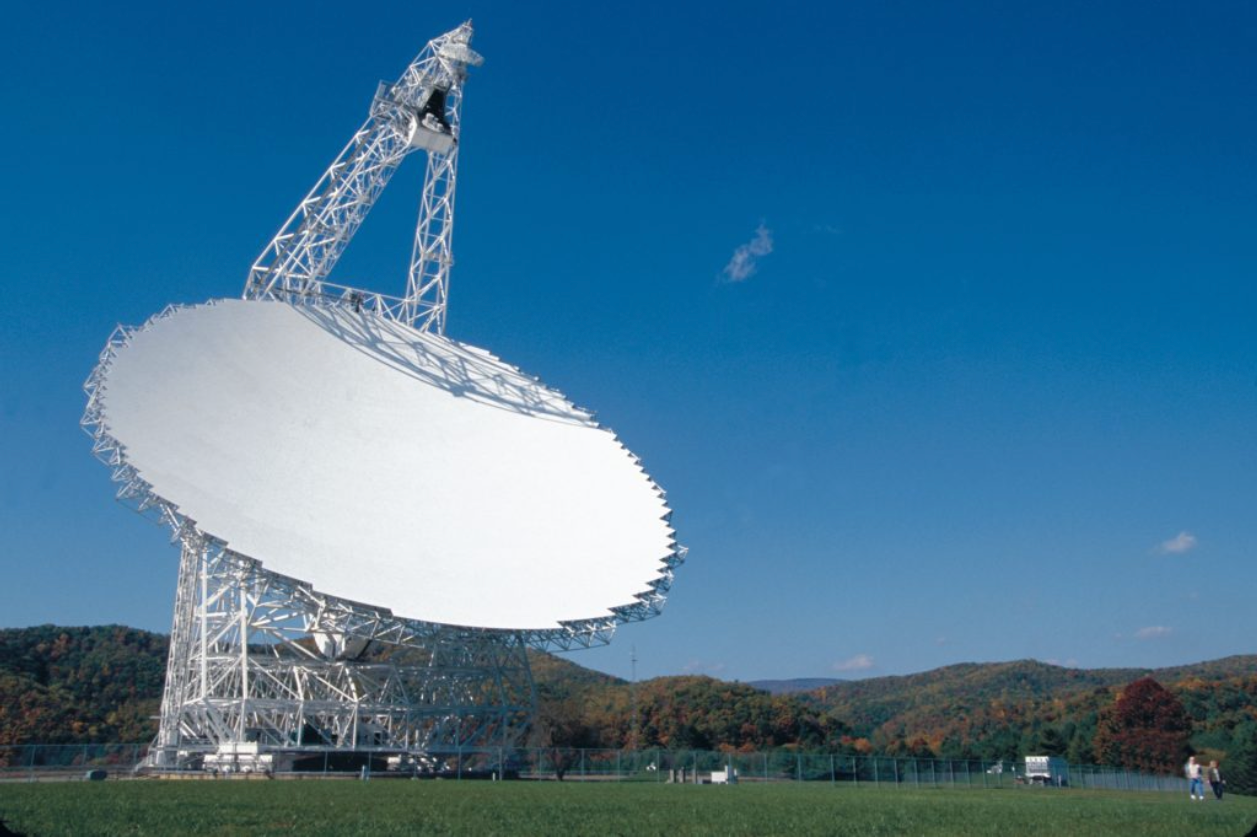The National Radio Astronomical Observatory (NRAO)
For more information, please visit:
National Radio Astronomy Observatory (NRAO) is a U.S.-based research facility that provides state-of-the-art radio telescope facilities to the scientific community. NRAO is funded by the National Science Foundation (NSF) and operated by Associated Universities, Inc. (AUI). Via the following mission statements, NRAO supports and advances research in radio astronomy:
- Operating cutting-edge radio telescopes.
- Providing access and support for the global scientific community.
- Developing new instrumentation and technology.
NRAO headquarters is in Charlottesville, Virginia, located in the University of Virginia campus. NRAO runs three key facilities:
Karl G. Jansky Very Large Array (VLA)
It is located in the Plains of San Agustin, New Mexico, USA. With 27 antennas working in the frequency range of 1 to 50 GHz (corresponding to ~30cm to 7mm radio wavelengths), it's one of the world's most famous and powerful radio telescopes. The VLA antennas can be moved along rail tracks into different configurations (named A, B, C, D) to provide different spatial resolutions.

Very Long Baseline Array (VLBA)
VLBA is a collection of ten radio telescopes across the U.S. used together for very high-resolution imaging. The antennas are spread across the U.S. from Hawaii to the Virgin Islands. VLBA provides a maximum of 8,611 km (5,350 mi) baseline resulting in milli arcsecond resolution. The VLBA operates covering 0.3 to 96 GHz frequency range.
Green Bank Telescope (GBT)
It is located in West Virginia and is a fully steerable radio telescope with diameter 100m, working in frequency range 0.3 to 116 GHz. The GBT operates in a protected, radio-quiet zone.

In addition, in an international partnership with European Southern Observatory (ESO) and National Astronomical Observatory of Japan (NAOJ), and in cooperation with the Republic of Chile, NRAO is also a involved with Atacama Large Millimeter/submillimeter Array (ALMA) observatory. NRAO plays a central role in coordinating the North American contribution, including user support through the North American ALMA Science Center.
ALMA
ALMA is an interferometric array of 66 high-precision antennas located in Chajnantor Plateau, Atacama Desert of northern Chile, at about 5,000 meters (16,500 feet) elevation. ALMA operates at millimeter and submillimeter wavelengths covering a frequency range of 84 to 950 GHz, ideal for studying cold regions of the universe—such as molecular clouds, star-forming regions, protoplanetary disks, and distant galaxies.
NRAO is also involved in development of the Next Generation Very Large Array (ngVLA), a major future radio astronomy project. The ngVLA is currently in the design and prototyping stage and will be located in Southwestern U.S., centered in New Mexico, with antennas extending into Mexico and across the U.S. The ngVLA will have 244 dishes covering a maximum baseline of 8860 km. The frequency range it is planned to cover is 1 to 116 GHz.